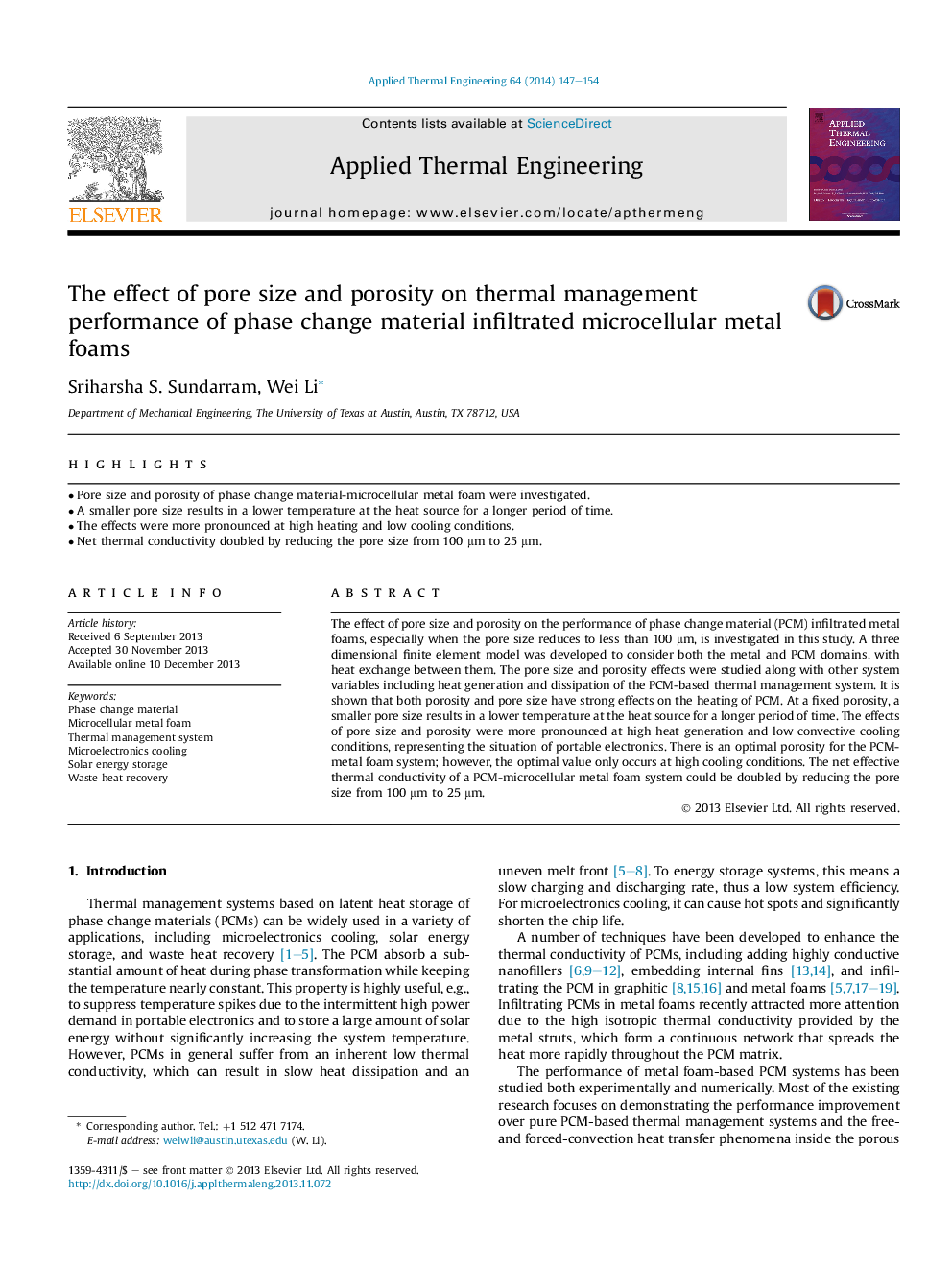| Article ID | Journal | Published Year | Pages | File Type |
|---|---|---|---|---|
| 646186 | Applied Thermal Engineering | 2014 | 8 Pages |
Abstract
The effect of pore size and porosity on the performance of phase change material (PCM) infiltrated metal foams, especially when the pore size reduces to less than 100 μm, is investigated in this study. A three dimensional finite element model was developed to consider both the metal and PCM domains, with heat exchange between them. The pore size and porosity effects were studied along with other system variables including heat generation and dissipation of the PCM-based thermal management system. It is shown that both porosity and pore size have strong effects on the heating of PCM. At a fixed porosity, a smaller pore size results in a lower temperature at the heat source for a longer period of time. The effects of pore size and porosity were more pronounced at high heat generation and low convective cooling conditions, representing the situation of portable electronics. There is an optimal porosity for the PCM-metal foam system; however, the optimal value only occurs at high cooling conditions. The net effective thermal conductivity of a PCM-microcellular metal foam system could be doubled by reducing the pore size from 100 μm to 25 μm.
Keywords
Related Topics
Physical Sciences and Engineering
Chemical Engineering
Fluid Flow and Transfer Processes
Authors
Sriharsha S. Sundarram, Wei Li,
